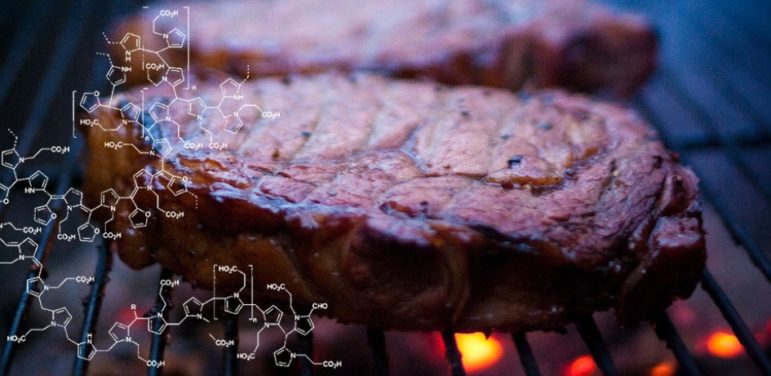The Maillard reaction to food: good or bad for your health?

A discovery by Louis-Camille Maillard
In 1911, a French chemist named Louis-Camille Maillard made a discovery which he exhibited at the Academy of Sciences. The latter then demonstrates to the whole world, that the amino acids, contained in proteins, turn brown and create components close to humus, when they are heated at high temperature with sugar.
In the scientific world, this chemical reaction is called “glycation”. It is also more commonly known as the “Maillard Reaction”.
Maillard reaction, a kind of caramelization of proteins
So, to put it simply, the Maillard reaction is a chemical reaction that can be observed when cooking food. Specifically, when proteins and sugar are heated to a high temperature (between 0 to 150 ° C). A kind of black body is formed, insoluble, and water is eliminated: the browned meat, releases an appetizing scent and gets that particular taste, which must be admitted, is delicious!
Are you telling yourself that it reminds of caramelization? It’s a bit like that, plus the amino acids. We explain: if we heat sugar and water, we get caramel. But if you heat water, sugar, and proteins (which contain amino acids), then the Maillard reaction occurs, and “Maillard bodies” form on the food (browning).

Maillard’s reaction, an art sought after by gourmets
Maillard’s Reaction is very important for the food industry, and for all catering trades. Indeed, it allows you to have some control over the preservation of products. It also deploys aromas, and influences the taste and appearance of foods, making them very appetizing.
Many foods that we eat regularly are the result of this reaction. The most telling example is: bread! We all look for that color and that perfectly controlled taste of a crispy crust, like “burnt just right”. Roast chicken, roasted coffee are other examples.
The precise control of this reaction depends on several things: the pH of the food, the humidity, and the temperature. A tiny variation of the combination of these three parameters, can make a big difference in the cooking of food, going from the best to the worst!
From the loss of food quality to the production of carcinogens
The problem is that the Maillard reaction can cause – apart from a very bad burnt taste if the temperature is really too high – a loss of quality of the proteins contained in the food. It can also produce substances that are indigestible, even harmful to health…
Cooking proteins at high temperature tends to destroy the amino acids they contain, and therefore the benefit of the food you are about to eat. In general, cooking food, whatever it is, at too high a temperature, would tend to greatly reduce its nutritional intake.
But another result of this reaction may be more disturbing. The Maillard reaction results in the production of “Maillard bodies”. There are several types. Among them, acrylamide.
The latter is formed when foods rich in starch, containing asparagine, are over-cooked. This is the case, for example, with crisps, breakfast cereals, or coffee powders …
The WHO has shown acrylamides to have toxic and carcinogenic effects on health.
Favor gentle cooking methods
To avoid the creation of these bad Maillard bodies, and to keep all the nutrients in the food, it is advisable to favor gentle cooking: poached, boiled, bain-marie, low oven, steam… To avoid this ” excessive browning.
It is also important, and we cannot repeat it enough, to limit industrial ready meals! We also pay attention to grilling, which we must have had difficulty in mastering the cooking (once in a while, in summer, we can still have fun).
Also note that marinated meats have a much more acidic pH, and the Maillard reaction is therefore triggered very quickly.
In short, we focus on fresh and undercooked foods, so as to limit the amount of Maillard body and all the negative effects it brings to our body.

